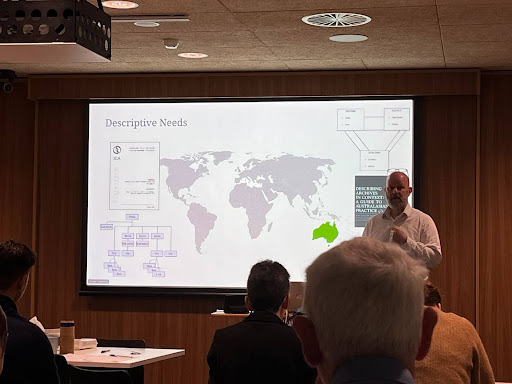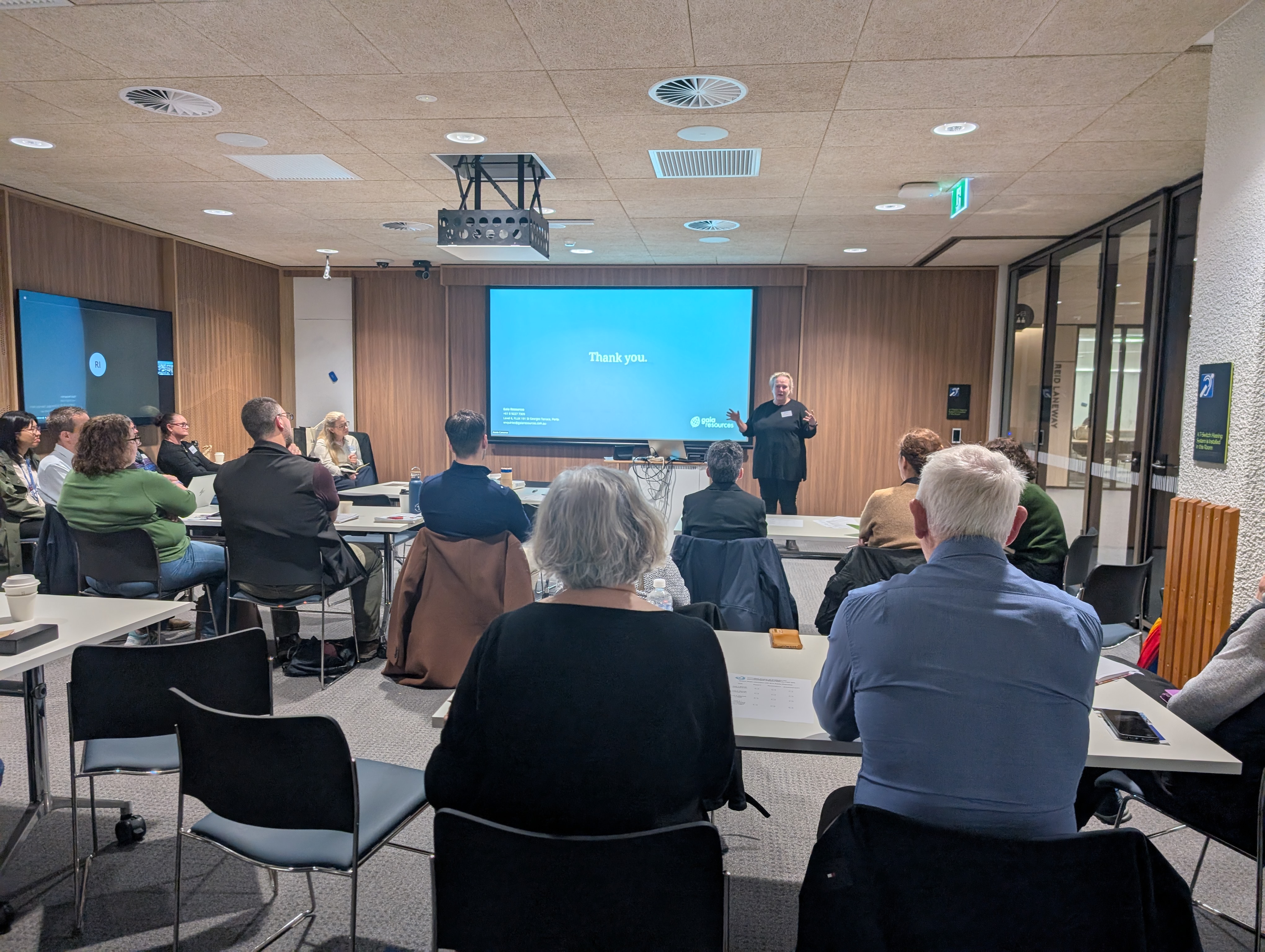The Australian Society of Archivists (ASA) ran another Professional Development (PD) day this year in Western Australia, and it’s the tenth ASA PD day or conference that we’ve attended to support the archival community - something we really enjoy being a part of.
This year’s ASA PD Day was about “Creating the Archivist’s Toolkit” and it featured Annie Cameron as the convenor, the Digitisation Centre of WA, our team from Gaia Resources and other presenters such as Rebecca Balling, Mark Brogan and Arooba Maqsood, covering a wide range of topics all aimed at helping provide professional guidance right across the archival workflow, which I tried to simplify into these steps:

Annie Cameron (from the Berndt Museum) started the day talking about “where to begin?” and she rightly did so in terms of the archival material itself - looking at aspects such as uniqueness, significance and how to describe the material. It was a great grounding session to get us all on the same page and to give us a common starting point for the day. Rebecca Balling followed up straight afterwards explaining the digitisation project that she has been involved with from the Wanneroo Regional Museum, covering off on selecting what to digitise and preparing for it all.
I was up next talking through a checklist of how to select an archival management system. This one was borne from experience of being on the other side - we’ve implemented a range of archival systems at Gaia Resources over the years - and to try to bring together a list of questions we wished we’d already known the answers to, or lessons that we’ve learned from our work across the years.

We had some great fun in the middle of the day, where there were parallel sessions run - either through a twin set of talks about Generative Artificial Intelligence (AI) photo repair demonstrated by Mark Brogan, and a handwriting recognition talk from Arooba Maqsood. These gave attendees some interesting food for thought on AI - Arooba in particular gave a great talk including a great quote - “training an AI is like teaching a kid to ride a bike”. Meanwhile, those who weren’t in that session got to do a tour of the Digitisation Centre of WA (and avoiding the rather torrential rain that came with the day).
After lunch, Meg gave a talk about Digital Preservation, which was trying to look at demystifying this practice for people to be able to start making even small steps forward in. Meg focused on areas like anti-virus, format identification and validation, transcoding and normalisation, metadata and storage - all key areas and by providing some easy steps to look at in the short term, we hope to have shown people a path forward in digital preservation.

One of the god quotes that came out from Meg’s talk was from the audience - that “metadata is a love letter to the future” - and this was something I wrote down and circled many times in my own notes! As it turned out, it was also the title of a presentation Meg gave with Dr Lise Summers back in 2011!
We finished up with a panel discussion that I was part of, and that went by in a blur. I’m not sure what we covered and said - I always find panel discussions really interesting in the moment and love doing them, but I usually can’t remember what I was talking about shortly afterwards!
It was great to be back on campus at the University of Western Australia (my alma mater) and to see how the Reid Library has changed since I was a student there many many years ago (there are no books!). So it’s with a big thank you to both Annie from the Berndt Museum and Deb from the Digitisation Centre of WA for setting up the use of the Library for the day - it was a great experience.
Archival Management Systems and Digital Preservation Systems don’t need to be daunting, and we hope that through our talks we gave the audience a range of ideas and support so that they could take this forward into their own work. We do enjoy talking about this type of stuff, so feel free to start a conversation with us across social media, or drop us a line to have a chat.
Piers